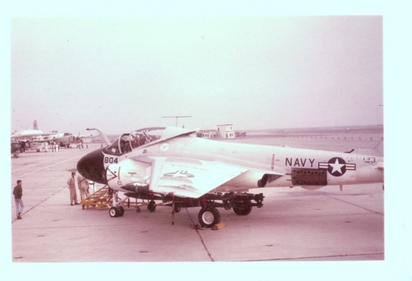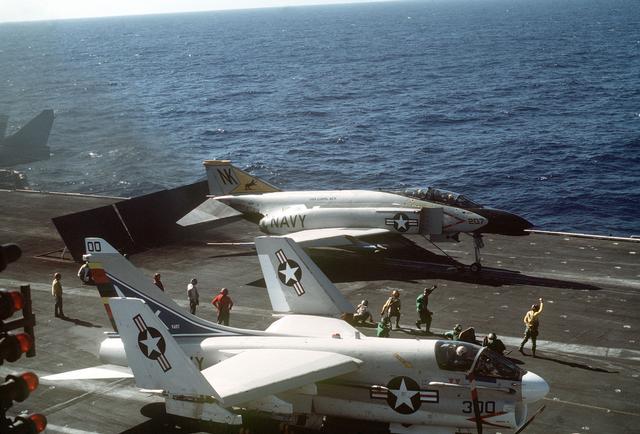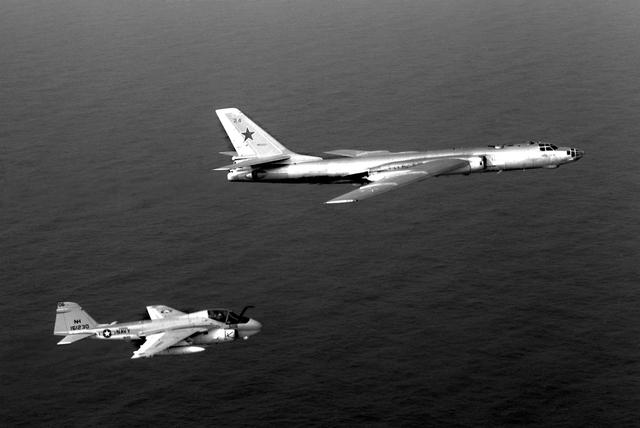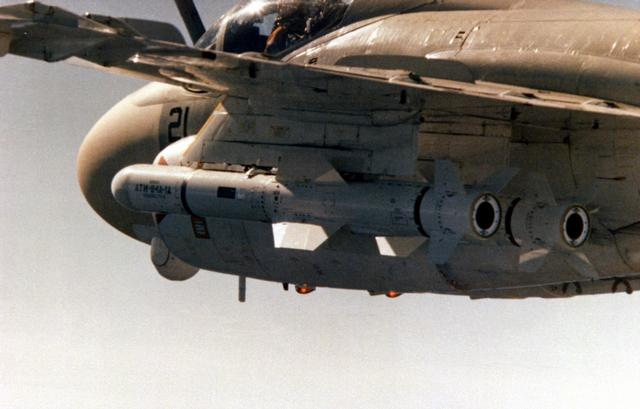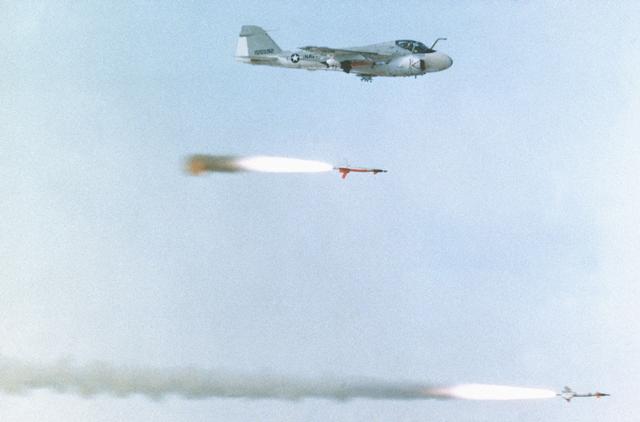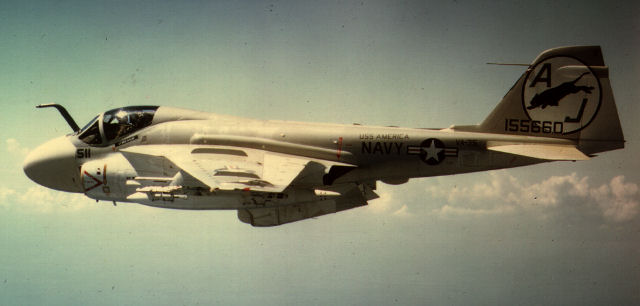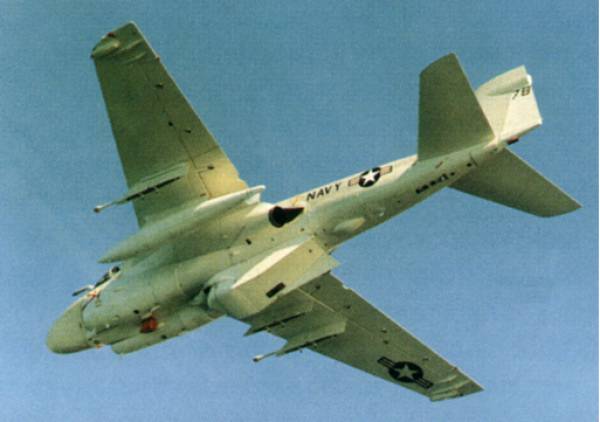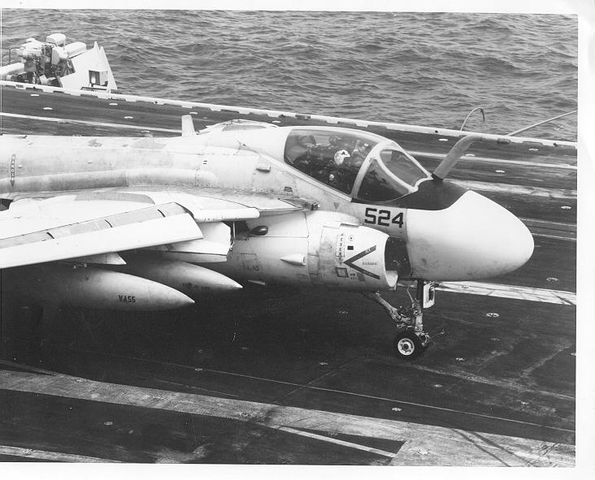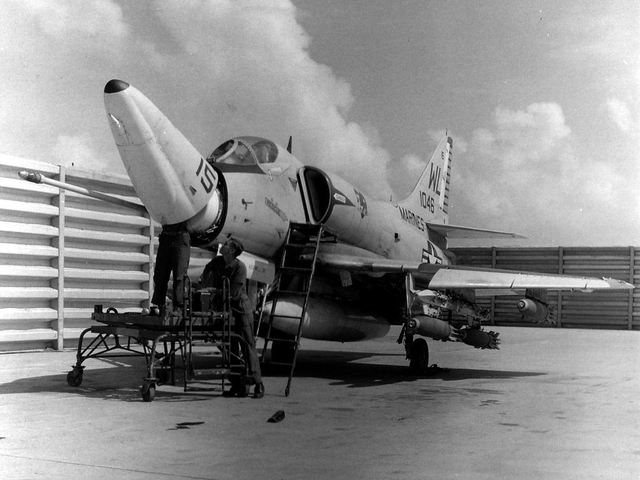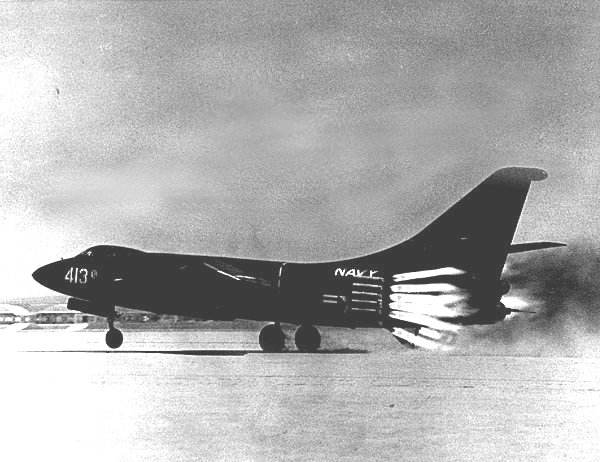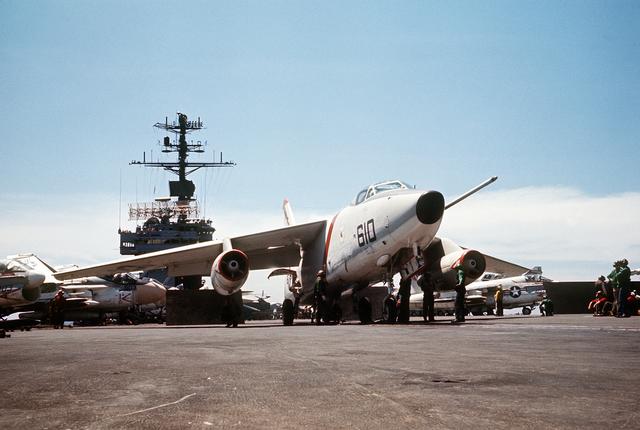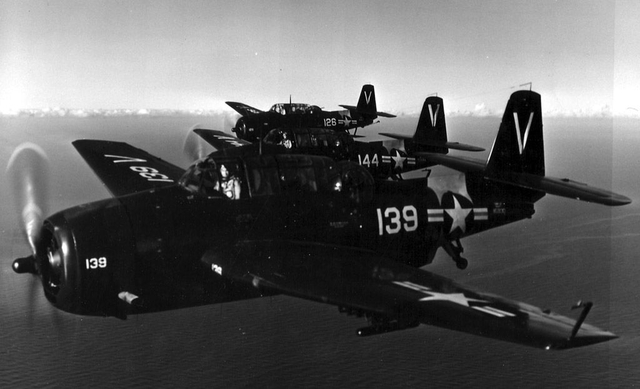-
Content count
458 -
Joined
-
Last visited
Content Type
Profiles
Forums
Calendar
Gallery
Downloads
Store
Everything posted by Southernap
-
From the album Southern Air Pirate's Pics
VAH-123 was the West Coast RAG for the A-3 Skywarrior and it began the transition to the A-6A training program in 1966. In 1967 VAH-123 seperated from the A-6A side and the new squadron became VA-128, which in turn became West Coast A-6 RAG. -
From the album Southern Air Pirate's Pics
VAH-123 was the West Coast RAG for the A-3 Skywarrior and it began the transition to the A-6A training program in 1966. In 1967 VAH-123 seperated from the A-6A side and the new squadron became VA-128, which in turn became West Coast A-6 RAG. -
From the album Southern Air Pirate's Pics
VAH-123 was the West Coast RAG for the A-3 Skywarrior and it began the transition to the A-6A training program in 1966. In 1967 VAH-123 seperated from the A-6A side and the new squadron became VA-128, which in turn became West Coast A-6 RAG. -

A-7B and F-4B onboad the USS Coral Sea circa 70's
Southernap posted a gallery image in Member's Albums
From the album Southern Air Pirate's Pics
-
From the album Southern Air Pirate's Pics
-
From the album Southern Air Pirate's Pics
-
From the album Southern Air Pirate's Pics
-
From the album Southern Air Pirate's Pics
ATM's are training rounds that are completely "live" except for having an active warhead. -
From the album Southern Air Pirate's Pics
The AGM-123 Skipper II was an attempt to produce a cost effective and simple anti-shipping weapon by the United States Navy. Basically it was a Mk83 with a Paveway II kit and on the back it was a Shrike Motor was strapped to it. Total cost was around US$10k per unit when compared to the AGM-84 Harpoon which could ring up around US$80k per unit. The AGM-123 was used in actual combat during Operation Preying Mantis when a VA-95 A-6E fired four AGM-123s into an Iranian Frigate Sahand. -
From the album Southern Air Pirate's Pics
A KA-6D belonging to VA-165 inflight refuels a pair of VF-92 F-4J's in 1972 -
From the album Southern Air Pirate's Pics
TRIM aka Trails, Roads, Interdiction, Multisensor was a low-light level TV Camera and IR camera designed to help a bombadier/navigator in an A-6C find targets along roads and trails. They were used from 1968 until the end of American involvement in 1973. They were later replaced in fleet service by the better TRAM (Target Recognization Attack multisensor) in the late 70's. -
From the album Southern Air Pirate's Pics
-

A-6A's of VA-35 and unknown F-4's bombing circa 1972
Southernap posted a gallery image in Member's Albums
From the album Southern Air Pirate's Pics
-
From the album Southern Air Pirate's Pics
-
From the album Southern Air Pirate's Pics
-

EKA-3B Skywarrior of VAQ-135 over San Fransico circa 1969
Southernap posted a gallery image in Member's Albums
From the album Southern Air Pirate's Pics
-
From the album Southern Air Pirate's Pics
-
From the album Southern Air Pirate's Pics
-
From the album Southern Air Pirate's Pics
© @1983 Department of the Navy
-
From the album Southern Air Pirate's Pics
TBM-3E's belonging to a USN Reserve Unit in a formation flight© @1949 Department of Navy
-

Are Carrier Ops realistic in WOE
Southernap replied to malibu43's topic in Thirdwire: Strike Fighters 1 Series - General Discussion
It all depends on the year in question and what nation. This is what I know about US Navy Tactics during the Cold War. In the late 1940's and up till about 1954 one of the missions that the US Navy carrier battle groups that were under 2nd Fleet control practiced was steaming to with in range of the Dutch and Norwegian coast and then launch either an P2V Neptune, AJ Savage, A3D Skywarrior to both theater and strategic targets along the Baltic Coast. While a CVBG did that a similar US CVBG would steam to with in range of the Kola Peninsula and deliver nuclear weapons to the HQ of the Red Banner Fleet. As strategic thoughts progressed, the Navy's primary mission during a NATO/WARSAW PACT conflict would of shift from the land combat in Central Europe to engaging the Red Banner Fleet in either the Norwegian Sea or North Atlantic and then again steaming to with in range of the Kola Peninsula to attack Soviet Naval Aviation bomber bases there, submarine pens, and various other targets. When the 60's gave way to the 70's detente there was more and more talk of NATO's Carriers being used to seize the initiative in the suspected battle for Norway. They would also attempt to steam the tide of Soviet Submarines leaving their pens for action in the North Atlantic. Finally in the early 80's after the Navy wrote a new strategic paper titled "The Maritime Defense" in 1986 in there they talk about the use of Carrier Air Power to help during the defense of Iceland, North Atlantic Convoys, defense of Iceland, and training to operate ashore or in protected Fjords in the Norwegian Sea. The biggest thing is the use of USMC in turning the Baltic operations against the WARSAW PACT. Whether that was from an opposed landing on the Danish or Northern German coast with Marine Air Group flying support of of Southern Norwegian Air bases or using USMC units to conduct penatration into Yugoslavia and strike at Czechslovkia and again a MAG flying out of either Northern Italian or Northern Greek bases. -

Does Anyone Mind LONG Distances In This Sim?
Southernap replied to a topic in Thirdwire: Strike Fighters 1 Series - Mission/Campaign Building Discussion
The issue though is that this isn't a serious sim. Most people play the TK series of games because they are easier to pick up and get right into the flying and destroying targets business. If they wanted to really take on the challenges of take off, LORAN/TACAN/DR navigation, flipping the airplane around to find the target and trying to put five hundred pounds of death on to it; well then Microsoft Game Studios would still be building their Combat Flight Simulation program or looking for something of the scale of complexity that Lock-On or Falcon 4 were. If it was a serious simulation then you would have the ability to accurately model in-flight refueling or the fact that one doesn't get a chance to walk up and just change their weapons while sitting in the hangar. So if the planners had figured you needed to fly from Bitburg to the Inter-German Border near Frankfurt in a F-84F with only one bomb and drop tanks on the rest of the hard points. Well that was the way it was going to be. Even in Real Life the most that a squadron planning staff can look at the air tasking order for the next day and submit the best idea on what the loadouts they would want for the next days flights. Some times those changes get over ruled by higher staff. You are correct though that in real life one had to accurately pay attention to fuel management in a large number of those early jets and even today there have been a number of times some close calls in tactical combat aircraft have come from aircrew not paying attention to fuel management. -
F-15 vs F-14 vs F-4 vs anything else Give it a rest. First off you are comparing apples to oranges to plums. Remember this: The F-4 was designed and built by the Navy to do Fleet defense in all weather with an all missile weapons systems. It wasn't designed to mix it up over the beach. Why? Because the future held that you were either going to be dropping nukes or preventing planes from dropping nukes. IFF and Visual ID'ing a target in the days of radar and missiles was considered obsolete. Just look at the RAF and the RN after the White Paper published by the Ministry of Defense in 1957. Basically it said that the United Kingdom didn't need manned fighters when missiles could do it better and cheaper. So instead of upgrading and improving some good lines, they were left with the Lightening. A capable jet but by the time it was removed from front line service in the mid-80's was severely outclassed by even the targets it would have to attack. The only reason the USAF picked up the F-4 was that they saw a capable jet which could replaced the F-100, F-104, and F-101 in front line service. The USAF were the first to consider putting bombs on the thing and using it in the strike fighter role. The F-14 actually began all the way back in 1957 with the requirements for a USN Fleet Defense Interceptor. Even as the Navy was seeing the potential of the F4H-1 (F-4A) they also realized that to properly defended a Carrier Battle Group from attack by Soviet Naval Aviation bombers and thier long range cruise missiles. The biggest problem was that the F-4 had a small radar suite and it didn't have the gas to hang out 100+ nautical miles from the Carrier waiting for the oncoming Badgers, Bears, Blinders, Bisons, Beagles. So the USN issued a requirement for a subsonic aircraft that was was able to loiter for 4 plus hours, be designed to carry either the AIM-47 Falcon or the AAM-N-10 Eagle long range radar guided missiles, it also had to be able to carry a radar that could see out 150nm from the aircraft. This requirement lead to Douglas designed an aircraft called the F6D Missiler. Basically this was an airplane that had a three man crew (pilot, co-pilot, RIO) it mounted the APQ-81 airborne radar system a radar under design at the time whose major feature was a five foot across radar dish, and could carry a load of six AAM-N-10 Eagle missiles out to a 200nm from the carrier and loiter there for 3.5 hours. It was subsonic and it was being designed to utilize the TF30-P-2 engine. Finally the aircraft was being designed to link into the Navy Tactical Data System (NTDS), which basically links all the radar information back and for between everyone on the network. This was going to work well with the W2F-1 Hawkeye which Grumman was designing at the time to replace the WF-1 Tracer. The idea was that both of these aircraft working in tandem could successfully engage a SNA bomber regiement and whittle it down for the F-4's,F3H Demons, F8U Crusaders to play clean up or turn it all over to the Talos and Terrier launchers on the escorts. The furthest the F6D made it was design and testing of the radar suite, money on the Eagle missile (where were basically going to be fire&forget radar guided and capable of flying at Mach 5 out to a range of 100nm from the aircraft). Some cool little drawings and a few blue prints. As costs began to sky rocket in the early 1960s, Ike's administration killed the plane. Some of the requirements were revived in McNamara's TFX project. The long range, loiter time, and the ability to carry the AAM-N-10 Eagle and the TF30 engines. TFX became the F-111A and F-111B for the USAF and USN respectively. F-111B failed to make carrier suite ability testing and it was scratched, in turn it was replaced by a new Grumman Design coming from the lessons learned about the F-111B which became the F-14. As Streak pointed out the early downfall of the F-14A's was the TF30's. However, the F-14A was originally designed to incorperate the F100 engines, these fell through as the deadline for a flying prototype neared. Instead Grumman went with the back up TF30's on the hope that the F100s would materilze in time. They did not and BuAir decided that to re-engineer the F-14 to incorperate the F100s into the airframe and supply system would of costed too much money. The F-14 was already approaching near records at the time for development. A few other items changed as well during the change from F6D to F-14. The Eagle missile were canceled in 1968 and instead Hughes redesigned thier AIM-47 to become the AIM-54 Phoneix which incorperated ideas from both the AIM-47 and the Eagle missile. The AIM-47 was originally slated to arm the YF-12 Mach 3 interceptor. One of the things this missile had going for it was that it was designed to basically achieve a ballistic arc to its target. The Rocket motor threw it up into the stratosphere, where the air is thinner, and then used that to achieve a Mach 6+ speed. Once it neared the target it could recieve a quick update from the launching platform and then dive down on the target to kill the target from either the kenitic energy alone or through the use of it proximity fuzing to detonate a continuous rod style warhead. With the filing of the Ault Report in 1968 some additional features would be added to the F-14 from the original designed signed off in 1967. A gun system would be added and to help improve long range Visual Identification a camera system would be added as well. The F-14 came in to do the job of going out killing Soviet cruise missile carrying bombers with its AIM-54 Phoneix, it could be guided via data link by the E-2 Hawkeyes and track these targets and kill up to six of them with the AIM-54. If needed it could mix it up with the escorting fighters, but it really wasn't built for that. The USN kills against the SU-22's in 1980 and the MiG-23s in 1989 were through superior training and skill of the aircrews, not just because of the airplane itself. The F-15 meanwhile was designed to be a heavy weight fighter that was designed to engage at long range on the NATO side of the missile belt then go in and mix it up over Central Europe with the MiG-23's and its precieved primary opponent at the time the MiG-25. It was believed when the MiG-25 was seen by Western Intelligence that it was a heavy weight fighter design to come ripping in at high speeds lay waste to NATO air space and then go ripping out of there. It was also thought that the MiG-25 with it large control surfaces would be able to out turn its Western Opponents. It wasn't until the F-15A had started to hit front line service in the mid 70's and with the capture of Belenko's in 1976 at Tokyo that the actual role of the MiG-25 was realized. That was as a bomber interceptor. It had zero dog-fighting capabilities. By then it was too late to redesign the F-15. However, there were some serious advantages gained by having such a large aircraft. MacAir designed it to be a total lifting body airplane, so it could create lift just with the fueslage itself and not by the wings alone. Also with the large size of the aircraft it could carry a large load of gas and carry a very large radar suite which would give it great loiter time and the ability to see the a large amount of the airspace in front of it. Finally just like the F-14 saw the reintroduction of the gun into Navy tactical aircraft use, so did the F-15 saw with th Ault reports lessons learn see the reintroduction from the get go the gun back into USAF usage. The other interesting thing about the F-15 was that its design was being built by the "Fighter Mafia" inside the USAF at the time. So there was not a single idea nor thought of hanging air to ground ordanance on it. The F-15 was designed to be a fighter in the same vein as the P-51 and F-86 were before it. Think about that for a second. The USAF wanted a fighter and the US Navy wanted an Fleet Defence Interceptor. Two different missiles that lead to two different aircraft being accepted into US inventory. So don't get so wrapped around the axel about the differences between the two aircraft. They are two different types of missions assigned to them. Oh and as to the F-14 carrying air to ground ordanance. That was tested out by Grumman during the initial testing and the software was written to delivery the Mk80 Series bombs and the fighter community inside the Navy nixed that idea. They thought it would detract from training for thier primary mission of interception. So until the early 90's air to ground wasn't even thought of for the F-14. With the retirement of the A-6 and the need for a long range strike platform that air to ground was re-introduced to the platform. Which served it well during the opening stages of the War on Terror. Fighter Pilots make movies, but attack pilots make history!
-

Missing 3D models for some items
Southernap replied to kct's topic in Thirdwire: Strike Fighters 1 Series - General Discussion
That is a case of conflicting weapons packs. Use the Mirage Factory weapons pack or use the Bunyaps weapons pack but not both at the same time. Otherwise theini's call out the wrong LOD's (what the game uses to draw stuff). -

HOW TO OPEN WEAPONS DATA INI FILE WITH WEAPONS EDITOR?
Southernap replied to RGDOE's topic in Thirdwire: Strike Fighters 1 Series - General Discussion
It has been a while since I have messed with the Weapons Editor, but if my fuzzy memory serves me right. You need to look at opening up the weapons editior and then re-save it as the weaponsdata.ini to make your tanks appear.


